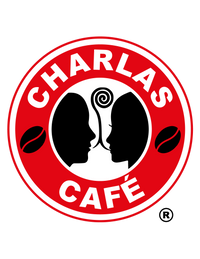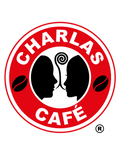The caffeine in a cup of coffee
How much caffeine does a coffee have?
Caffeine is the most widely consumed psychoactive drug in the world. This substance can be found in foods and drinks and is naturally present in coffee. After consumption, it is quickly digested and absorbed into the bloodstream and then acts by stimulating the brain and central nervous system.
Caffeine is present in coffee, black and green tea, chocolate, energy drinks, among others.
Without a doubt, this is a question that, although at first glance it seems simple, can have multiple answers since it will depend on several factors . The preparation time, the type of roast or the origin of the coffee beans are just some of the factors that determine the amount of caffeine in a cup of coffee.

It's no secret that coffee contains caffeine, but you've probably asked yourself the eternal question: how many mg of caffeine does a cup of coffee have? The answer, as we mentioned above, is not as simple as it seems and has many nuances. If you'd like to delve with us into the fascinating world of the natural stimulant par excellence and find out what role it plays in your cup of coffee, we'll tell you!
The caffeine content of a cup of coffee depends on several factors, which we will reveal to you shortly. The EFSA ( European Food Safety Authority) gives us some clues about how many grams a cup of coffee contains depending on the variety we prepare. For example:
- The amount of caffeine in a 60 ml coffee is 80 mg .
- A 200 ml cup of filter coffee has 90 mg of caffeine.
- 365 ml of American coffee , on the other hand, contains 154 mg .

What influences caffeine content?
- Extraction time . The extraction time of each variety determines the final flavor of your cup, but it also influences the amount of caffeine present in the coffee. The higher the extraction time , that is, the longer the coffee beans are in contact with the water needed to make it, the higher the percentage of caffeine in the coffee we prepare.
- Roasting level of coffee beans . The degree of roasting affects the flavour, aroma, body and also the caffeine. Generally, coffee beans with a lighter roast contain a higher amount of caffeine than those with a higher roasting . The reason? The more heat is used, the more the molecules of this stimulant are broken down.
- Grinding degree . The type of grind used to make coffee also influences the extraction of more or less caffeine from the beans. Thus, a fine grind provides a higher concentration of caffeine in the coffee and vice versa.
- Coffee bean variety . Arabica and Robusta are the most well-known and widely used coffee types in the world. Although both are synonymous with great quality and tradition, they do not share the same amount of caffeine. Robusta coffee has a higher concentration of caffeine, while Arabica contains a lower amount .

How much caffeine is too much?
Caffeine is a stimulant that can help boost your metabolism, improve cognitive function and increase athletic performance.
But if you consume too much caffeine, you may start to experience some of its negative effects, such as anxiety, heart palpitations, restlessness, or sleep disruptions.
So how much caffeine is too much?
According to the FDA , the general guidelines for recommended daily caffeine intake are 400 mg of caffeine per day for a healthy adult , which means about 4 to 5 cups of coffee, depending on the type. Consuming more than 400-600 mg of caffeine per day can have various and serious effects.
Each person's sensitivity to caffeine in their body is different and it is possible to develop certain caffeine tolerance , which is why some people can drink 4 cups of coffee every day without any adverse effects, while others will get the jitters after their second cup. When monitoring your daily caffeine intake, don't forget to take into account other sources of caffeine in your diet besides coffee. Soda, tea, energy drinks, or even chocolate can all contribute significantly to your daily caffeine intake.
Caffeine in coffee
The amount of caffeine in a cup of coffee depends on several factors, including the brewing method, type of coffee, roast, grind, and serving size.
A standard brewed coffee contains, on average, 95 mg of caffeine per cup, a latte or double espresso has around 120 mg of caffeine per cup, and some coffees with even higher caffeine content, such as cold brew or Turkish coffee, can contain up to 200 mg of caffeine.
Credits: FDA, EFSA | Science, safe food, sustainability - European Union.











Leave a comment